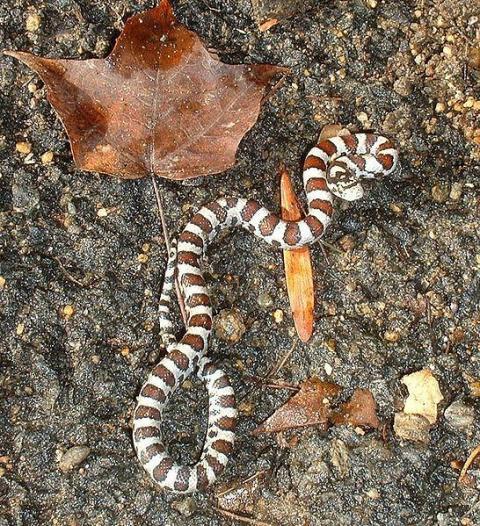- Jun 12, 2009
- 280
- 6
- 111
Quote:
To avoid confusion, I feel obliged to mention that you can't see the venom glands on a venomous snake without cutting its head open. Perhaps MTTMaxx meant the head shape, but that's also unreliable.
If all you want to know is whether a snake is venomous or not, learn your local species of venomous snakes. Here in North America, that's rattlesnakes (which never have smooth pointy tails even when they don't have rattles), copperheads (which always have broad hourglass-shaped bands, not blotches), cottonmouths (which have very broad heads with prominent brow ridges and white mouth linings at all ages and hourglass-shaped bands similar to copperheads as youngsters), and coral snakes (red touch yellow, kill a fellow). The adult cottonmouth is the most difficult to identify because here are so many dull-colored nonvenomous water snakes with which they can be confused. These are the only snakes north of Mexico that can cause significant harm to people, though large constrictors such as rat snakes and bull/gopher snakes may present a threat to poultry.
To avoid confusion, I feel obliged to mention that you can't see the venom glands on a venomous snake without cutting its head open. Perhaps MTTMaxx meant the head shape, but that's also unreliable.
If all you want to know is whether a snake is venomous or not, learn your local species of venomous snakes. Here in North America, that's rattlesnakes (which never have smooth pointy tails even when they don't have rattles), copperheads (which always have broad hourglass-shaped bands, not blotches), cottonmouths (which have very broad heads with prominent brow ridges and white mouth linings at all ages and hourglass-shaped bands similar to copperheads as youngsters), and coral snakes (red touch yellow, kill a fellow). The adult cottonmouth is the most difficult to identify because here are so many dull-colored nonvenomous water snakes with which they can be confused. These are the only snakes north of Mexico that can cause significant harm to people, though large constrictors such as rat snakes and bull/gopher snakes may present a threat to poultry.







